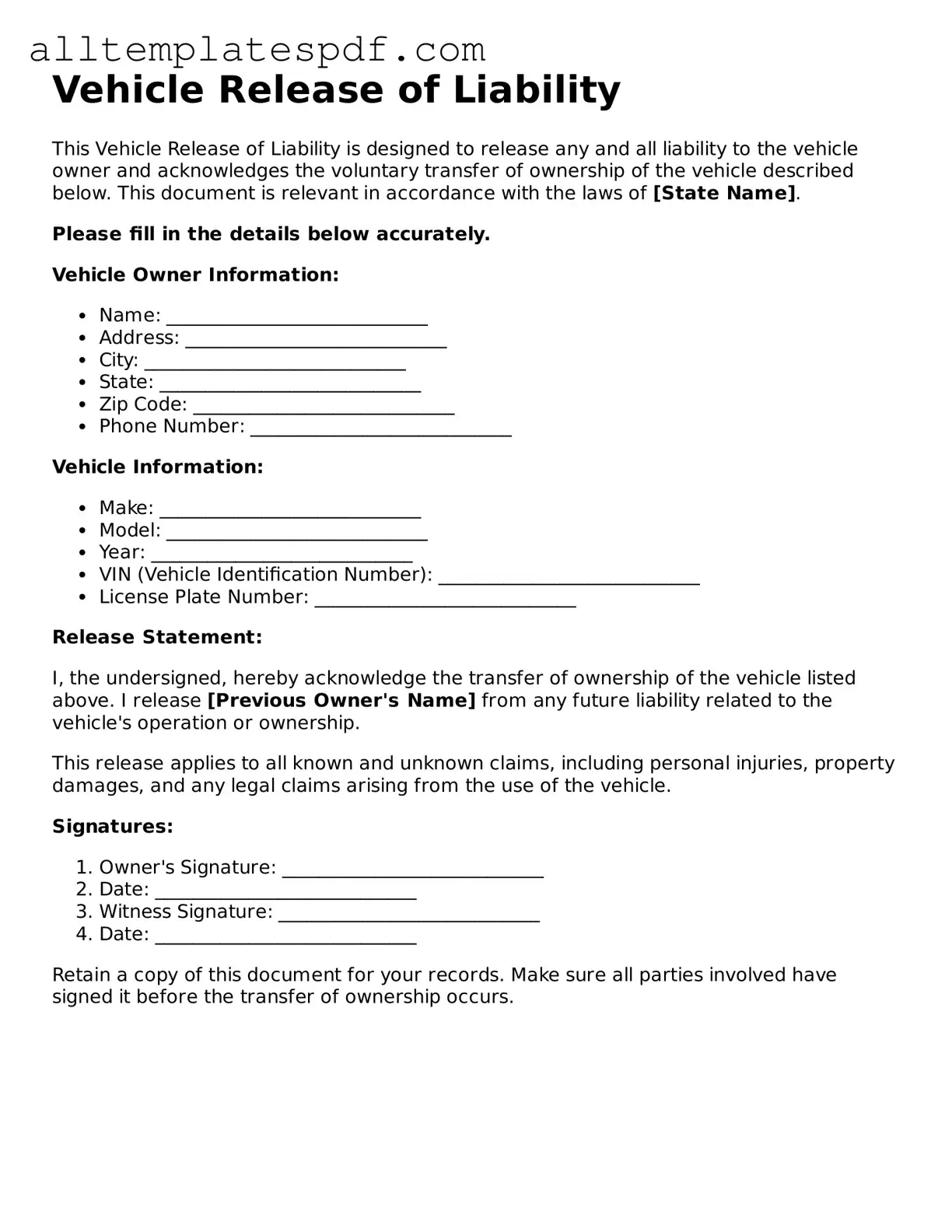Filling out a Vehicle Release of Liability form can seem straightforward, but many people make common mistakes that can lead to complications down the line. One frequent error is not providing complete information about the vehicle. It’s essential to include the make, model, year, and VIN. Omitting any of these details can render the form invalid.
Another mistake is failing to sign the form. Many individuals may overlook this step, thinking that simply filling in the information is enough. Without a signature, the document lacks authenticity and may not hold up in case of disputes.
People often forget to include the date on which the form is signed. This detail is crucial, as it establishes the timeline of the release. If a dispute arises later, the absence of a date can create confusion about when the liability was officially released.
Inaccurate information about the parties involved can also pose problems. It’s vital to ensure that the names and addresses of both the vehicle owner and the recipient are correct. Any discrepancies can lead to legal issues or difficulties in processing the release.
Another common oversight is not reading the entire form before submission. Many individuals skim through the document, missing important clauses or requirements. Taking the time to read the form thoroughly can prevent misunderstandings and ensure all necessary information is included.
Some people mistakenly believe that the form is only necessary for certain situations. In reality, a Vehicle Release of Liability form is beneficial in various scenarios, such as when selling a car or transferring ownership. Not using the form when required can expose individuals to potential liabilities.
Additionally, failing to keep a copy of the completed form is a mistake that can lead to issues later. Retaining a copy for personal records is crucial, as it serves as proof of the release. Without it, individuals may find themselves in difficult situations without any documentation to support their claims.
Lastly, misunderstanding the implications of the form can lead to significant problems. Some individuals may not realize that signing the release means they are relinquishing any future claims related to the vehicle. Being fully aware of what the form entails is essential to avoid unintended consequences.
